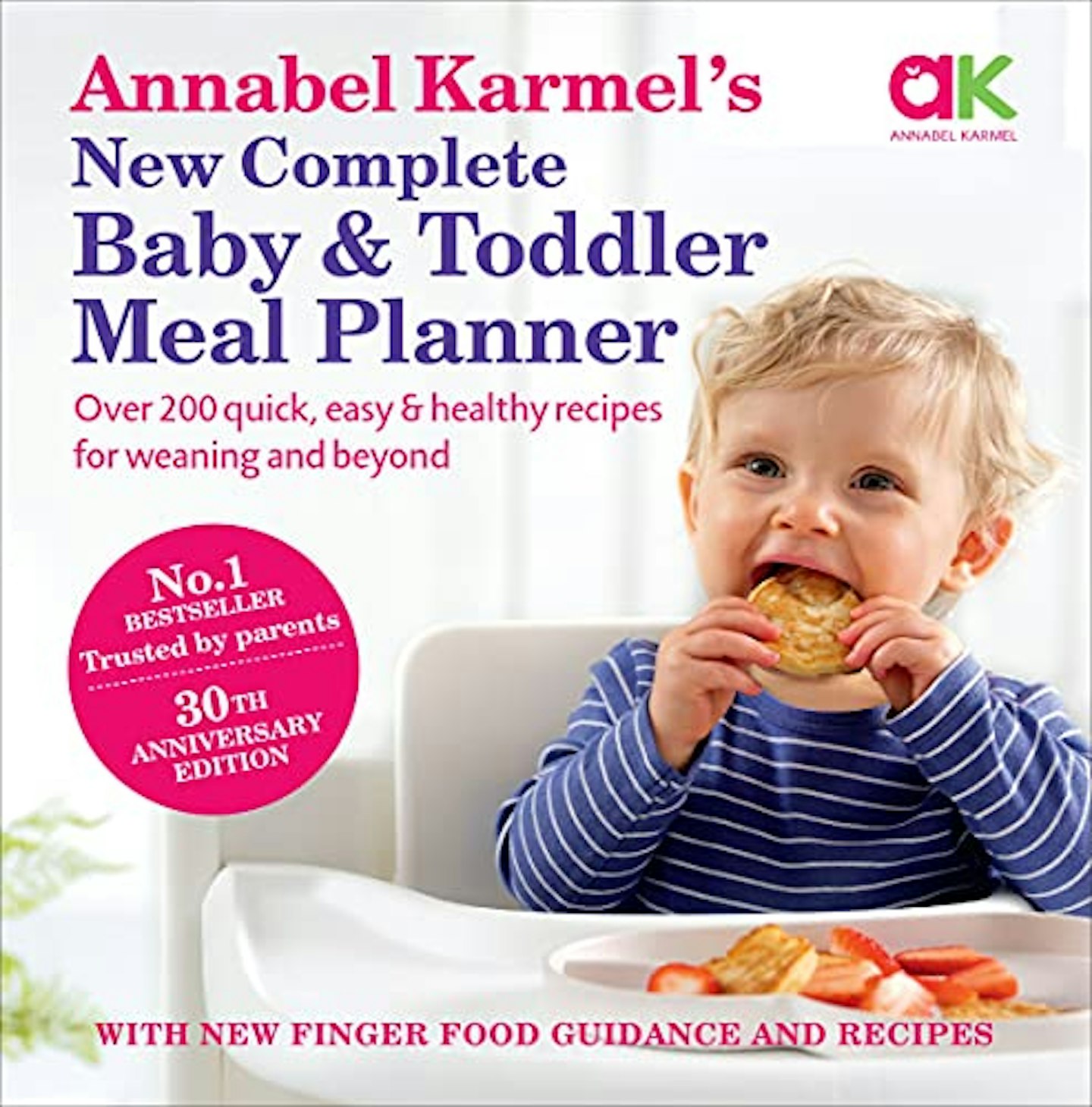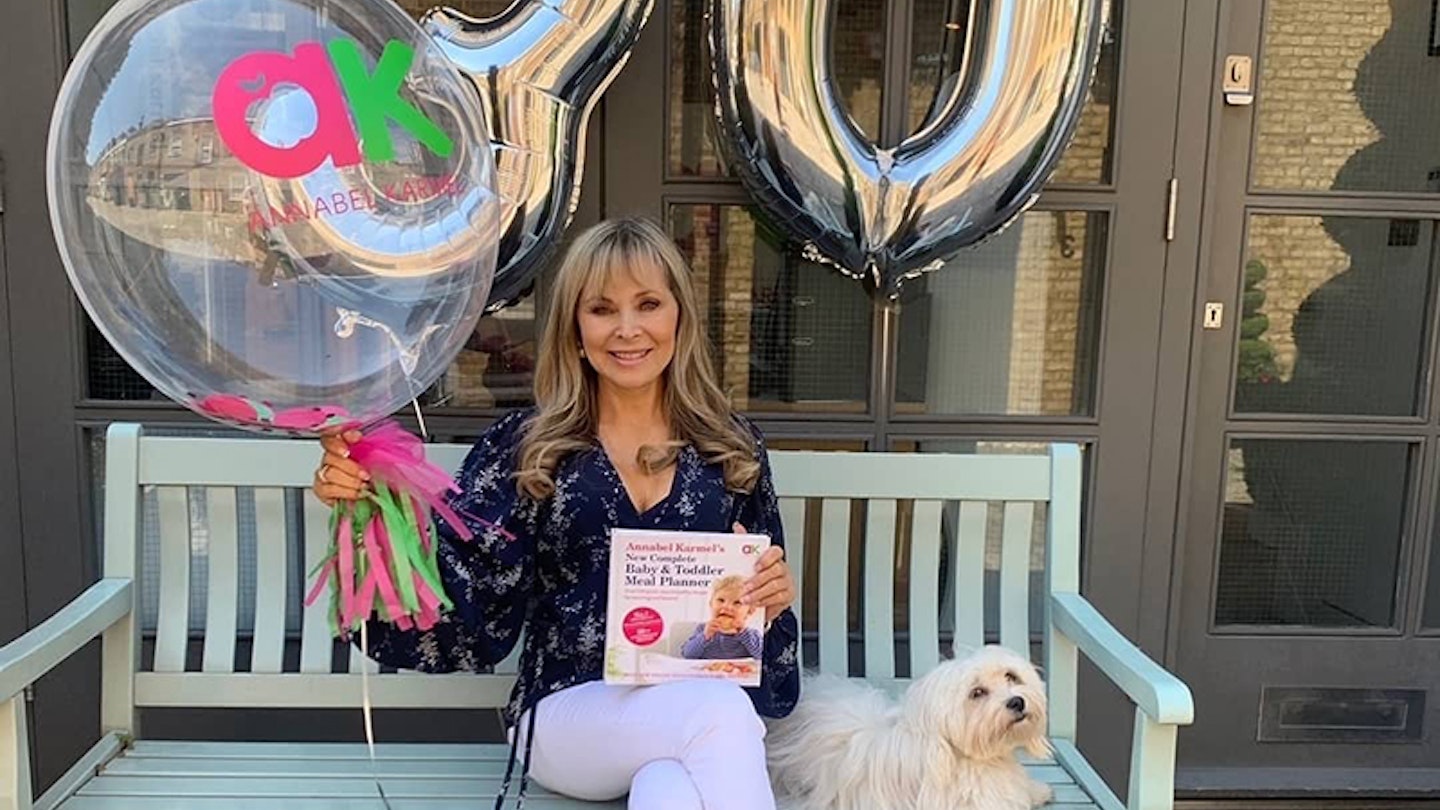Baby and toddler food expert and ‘Queen of Weaning’, Annabel Karmel, is celebrating her 30-year reign with a brand-new edition of her first book, Annabel Karmel’s New Complete Baby & Toddler Meal Planner.
We caught up with her to find out what’s changed in her time at the top of the weaning charts, plus get her expert tips so you can wean like a pro.
“This book was the beginning of my career,” says Annabel “although I didn't realise that when I was writing it. I've written over 40 books now, all on feeding children. And now we have food in supermarkets, toddler food and baby food. So that one book started a whole new career for me.
“The nice thing about it is that a lot of the people who were brought up on my food are now having their own children and giving them the same recipes they had when they were babies, which is a lovely thing – it’s the second generation of my recipes now!
“A lot has changed in 30 years, I’d say one of the main ones is the advice around allergens. When my children were babies the advice was to avoid allergens – now they’ve discovered that you need to get these allergens introduced to your children early on to desensitise them.
“Also it was also more purees then, whereas now is more baby-led, so I’ve added a lot more finger-foods into the book.”
What are the biggest challenges with weaning?
“The biggest challenge for baby is learning to swallow, rather than the sucking reflex they know from the breast or bottle,” explains Annabel.
“Actually taking food from the front to the back of their mouth can be a bit challenging. You may find your baby thrusts their tongue to the front of their mouth, and you think they’re refusing the food you’ve cooked for them, but actually they’re just figuring out how everything works in their mouths.”
What are the most common mistakes parents make when weaning?
“Not introducing finger foods early enough. I always try and give very soft foods at a very early stage. In fact, we've just launched a whole guide on how to finger foods on our website, because a lot of people worry when their baby gags, but actually gagging is a natural reflex for babies. It's a difficult one, because I can understand why they get anxious about it, but babies are quite smart and the gagging is very normal.
“A lot of people also get quite stuck on fruit and vegetables for weeks and weeks on end. But from six months babies need iron and essential fatty acids, so you also need to be introducing foods with these nutrients and doing it early. The best source of iron is meat or eggs. But if you want to give a vegetarian diet to your baby you can give plant based sources such as lentils and whole grain cereals, with red pepper to help baby absorb the iron.”
What are the benefits of using a meal planner?
“I think it's just giving parents the opportunity to understand what a good balanced diet is for babies. So for example, a lot of babies are iron deficient and it's very difficult to spot. So the way to prevent that is to make sure that your child has iron rich food twice a day, which sounds very overwhelming. But it's not really because giving porridge and strawberries or giving something like chicken or meat or lentils or tofu contains iron.
“Oily fish too is a great source of essential fatty acids, which are very important for the formation of baby's brain, and for the visual development of your baby from six months. So to give salmon, or an oily fish like salmon, twice a week.”
What’s the best food to start weaning with?
“There’s a new school of thought that says we should start weaning with bitter green vegetables. But this doesn’t work for all children, and you make it very difficult for yourself if you’re trying to push these vegetables and your baby just wants milk. Whereas other babies will happily have broccoli.
“You have to see how it goes with your baby, if you want to try giving them a bitter taste first, that's fine. But there's so much pressure on parents. Try the broccoli, sure, but if it doesn't work for you, that's absolutely fine. Then you can give sweet potato and butternut squash. Breast milk is sweet so babies naturally like sweet things. I generally start with things like root vegetables, so maybe a puree and a baton of roasted sweet potato that they can hold. They might not eat it at first, but they’re figuring out their hand-eye coordination. Then I give some green vegetables and then I get fruit. But if you want to give the vegetable first, that's great. And if your child takes them, that's great. But my kids started on sweet stuff and they still love broccoli, so don’t worry if your baby doesn’t want to start out on bitter veg.”
How do you go from first foods to complete meals?
“I've done a lot of different foods where you put everything in a food processor, and make them into small balls. They're easy to hold, and they're soft – you can make in bulk, and then freeze them and then just defrost them to give your baby as when needed. They're great because you don't have to be cooking every day. You can do this with salmon and vegetables and make salmon balls, that works really well. And with meat for example I will do beef cooked for at least an hour so it's really soft, all the vegetables and all the lovely like root vegetables like they make a delicious flavour. And then I'd also make mini meatballs with carrot and apple.
“Find ways that are easy to introduce these critical nutrients baby, and you can do it quite early on. I introduce these flavours around the third week of weaning so it will be within the six month age group.”
What’s the best piece of advice you have for parents starting out on the weaning journey?
“Don't look at what everyone else is doing, just go at your baby's pace, relax and enjoy it. Every parent has an intuition, there are no actual rules for weaning babies.
“It's important to introduce as many flavours as you can between about six months and 12 months, because babies grow very rapidly in the first year. They then tend to become quite fussy around 1 year old – they’re exploring their social independence, they won't want to be in their highchair anymore, they want to go around the house and find whatever is dangerous! So really use that six month period for experimenting with new flavours while they’re happier to do it.”
Annabel's top five weaning tips
-
There's no right or wrong way to wean – just stick to lots of variety and introducing new tastes.
-
Bring baby to the dinner table earlier – even before you start weaning. Also babies are great mimics so getting them to eat the same foods you're eating is good, plus it makes it easier to feed the whole family.
-
Finger foods are fun – babies love getting involved with their food, let them hold their food and make a mess!
-
Fresh is best – check the shelf life of some baby foods, I worry about what is in them to make them last that long. Blitzing up a batch of salmon balls or purees is super easy and simple, and you’ll actually know what your baby is eating. Don’t add salt, but you can add herbs and spices to make it tasty.
-
Snacks are a very important part of a baby's diet – go for fruits, vegetables, a bit of toast with peanut butter. You don’t want to fill them with snacks with zero nutrients, your baby’s tummy is very small, so give them as much nutrients in each meal or snack as you can.

